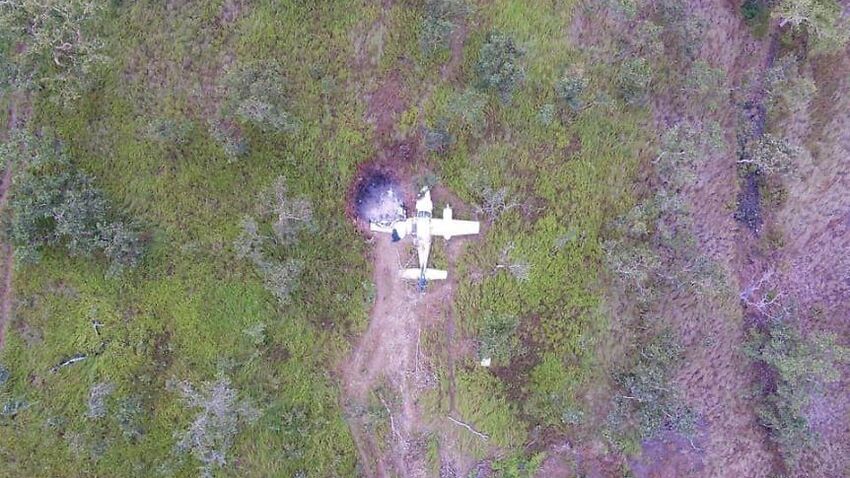An alleged drug flight to smuggle 500kg of cocaine from Papua New Guinea to Queensland came to a fiery end in July last year after a wing tip was ripped off a plane while landing in torrential rain on makeshift airstrip outside the capital Port Moresby.
Papua New Guinea’s Accident Investigation Commission has released a report that details how the drug run – thought to be the biggest in the country’s history – came undone.
The report highlighted failures in the management of aviation distress signals and search and rescue operations in PNG.
Australian pilot David John Cutmore told investigators he turned off the plane’s transponder to fly at low altitude into PNG on 26 July.
“As the aircraft approached to land, the outboard section of the left wing clipped a tree and separated from the aircraft and the pilot continued on with the approach and landed,” the report said.
The damaged plane was loaded with “cargo”, which police allege was half-a-tonne of cocaine, and refuelled.
After 20 minutes on the ground at Papa-Lealea, Cutmore attempted to take-off.
“The pilot reported … he lined up and commenced the take-off roll. As the aircraft lifted off, he noticed that the airspeed indicator was not working and that the aircraft was not achieving a positive rate of climb,” the report said.
He touched back down and careered off the end of the airstrip. The AIC report said the missing section of left wing affected the plane’s ability to produce lift.
AFP officers waiting at Mareeba airport to nab the pilot and the estimated $160m haul were left empty handed after a two-year investigation code-named Operation Weathers.
But five people were later charged in Queensland and Victoria over the failed smuggling operation.
Cutmore, an unemployed flight instructor, turned himself in to authorities in PNG and has since pleaded guilty to one charge of unlawful entry in breach of immigration laws. He has not been charged with any other offences.
AIC reported the force of the impact automatically set-off the plane’s emergency beacon but PNG authorities accounted for all local aircraft and ignored the distress signal.
Investigators said they could not be sure if the “cargo” contributed to the crash because it had been unloaded and the plane set on fire afterwards by the smugglers.
By the time AIC investigators finally arrived, PNG police and AFP officers had already secured the crash site.
The report into the safety issues recommended government-owned NiuSky Pacific (formerly PNG Air Services) “implement effective procedures” to manage distress signals and search and rescue operations to international standards.
It noted NiuSky responded saying “operational procedures are in the process of a full review and rewrite” as part of an upgrade of air traffic control systems and manuals “contain adequate procedures” and senior staff are trained for such incidents.
AIC described the NiuSky response as “unsatisfactory” for failing to “address the safety issues identified during the investigation”.
It also recommended PNG’s Civil Aviation Safety Authority (CASA) ensure effective oversight of aviation service providers’ search and rescue operations.
A spokesperson for Australia’s CASA said, “it will review the report and consider any associated safety related issues”.









